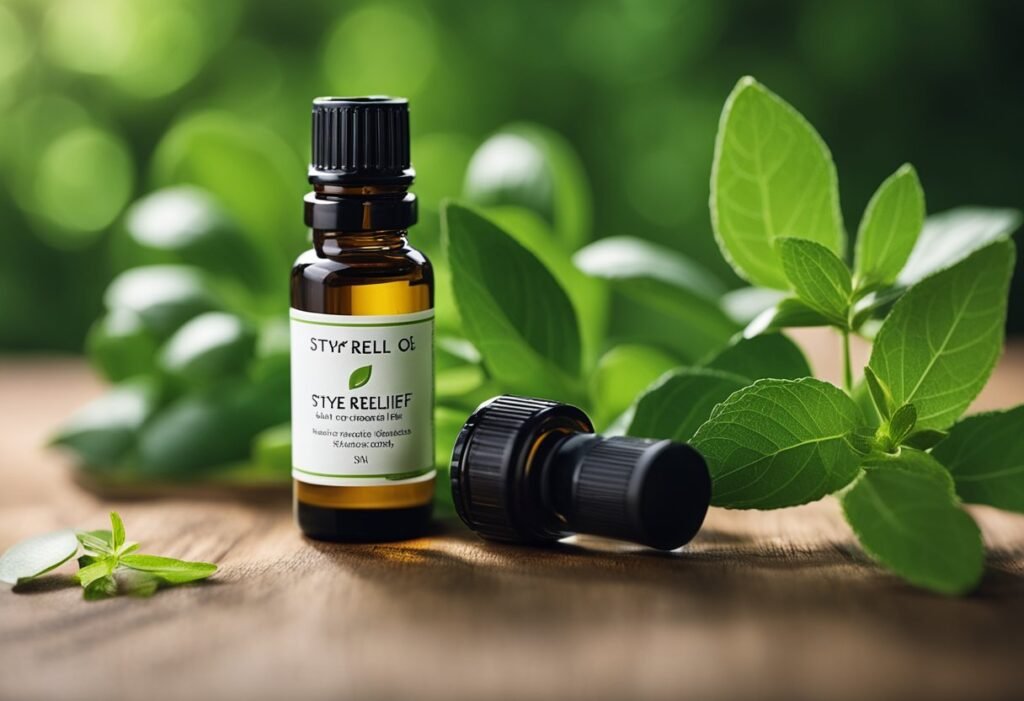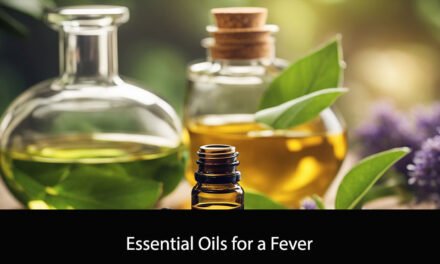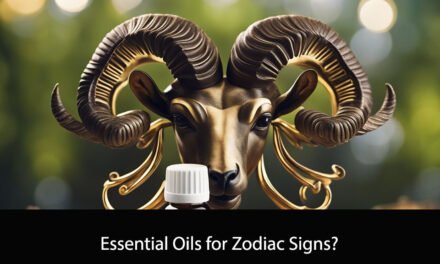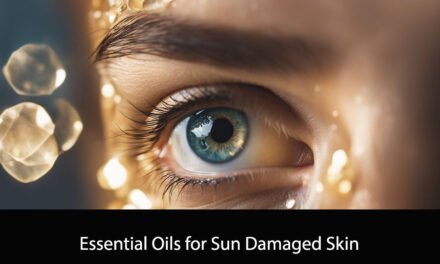Essential oils have been used for centuries as a natural remedy for various ailments, including eye infections. A stye is a common eye infection that occurs when a gland on the eyelid becomes infected. It causes a small, painful bump on the eyelid that can be uncomfortable and unsightly. While there are many over-the-counter treatments available, some people prefer to use essential oils for stye eye as a natural alternative.
Tea tree oil is a popular essential oil that is commonly used to treat stye eye. It has natural antibacterial properties that can help to fight the infection and reduce inflammation. To use tea tree oil for stye eye, dilute a few drops of the oil in a carrier oil such as coconut oil or olive oil, and apply it to the affected area using a cotton swab. Be sure to avoid getting the oil in your eye, as it can cause irritation.
Understanding Styes

Styes are a common eye condition that can be quite uncomfortable. In this section, we will discuss the causes and symptoms of styes to help you better understand this condition.
Causes of Styes
Styes are typically caused by a bacterial infection in the oil glands in the eyelids. These glands can become clogged, leading to the formation of a stye. Certain factors can increase your risk of developing a stye, including poor hygiene, hormonal changes, and underlying medical conditions like diabetes.
Symptoms of Styes
The most common symptom of a stye is a red, painful bump on the eyelid. You may also experience swelling, tenderness, and itching around the affected area. In some cases, the stye may cause your eye to water or become sensitive to light.
If you are experiencing any of these symptoms, it is important to seek medical attention to ensure proper diagnosis and treatment. In the next section, we will discuss how essential oils can be used to help alleviate the symptoms of styes.
Essential Oils Overview

When it comes to treating a stye eye, essential oils can be a natural and effective option. Essential oils are highly concentrated plant extracts that are known for their therapeutic properties. In this section, we will discuss the benefits of essential oils for eyes as well as safety and precautions to keep in mind.
Benefits of Essential Oils for Eyes
Essential oils can provide relief for stye eye symptoms such as redness, swelling, and pain. Some of the most effective essential oils for stye eye include:
- Tea tree oil: Known for its antibacterial and anti-inflammatory properties, tea tree oil can help reduce swelling and redness associated with stye eye.
- Lavender oil: This oil is known for its calming and soothing properties and can help reduce pain and discomfort caused by stye eye.
- Chamomile oil: Chamomile oil has anti-inflammatory properties that can help reduce swelling and redness of the eye.
- Eucalyptus oil: Eucalyptus oil has antimicrobial and anti-inflammatory properties that can help fight off infection and reduce inflammation.
When using essential oils for stye eye, it is important to dilute the oil with a carrier oil such as coconut oil or olive oil to prevent irritation.
Safety and Precautions
While essential oils can be a natural and effective treatment for stye eye, it is important to use them safely. Here are some precautions to keep in mind:
- Always dilute essential oils with a carrier oil before applying them to the eye.
- Do not apply essential oils directly to the eye.
- If you experience any irritation or discomfort, stop using the oil immediately.
- If you have any underlying medical conditions or are pregnant or breastfeeding, consult with a healthcare professional before using essential oils.
By following these safety precautions, you can safely and effectively use essential oils to treat stye eye symptoms.
Recommended Essential Oils for Styes

When it comes to treating styes, essential oils can be a natural and effective solution. Here are some of the best essential oils to use for styes:
Tea Tree Oil
Tea tree oil is a powerful antiseptic and anti-inflammatory oil that can help reduce swelling and redness associated with styes. It also has antibacterial properties that can help fight off any infection causing the stye. To use tea tree oil for styes, dilute it with a carrier oil such as coconut or olive oil and apply it to the affected area with a cotton ball.
Lavender Oil
Lavender oil is known for its calming and soothing properties, making it a great oil to use for styes. It can help reduce inflammation and pain associated with styes, as well as help speed up the healing process. To use lavender oil for styes, dilute it with a carrier oil and apply it to the affected area using a cotton ball.
Chamomile Oil
Chamomile oil is another great option for treating styes. It has anti-inflammatory properties that can help reduce swelling and redness, and it can also help soothe any discomfort associated with the stye. To use chamomile oil for styes, dilute it with a carrier oil and apply it to the affected area using a cotton ball.
When using essential oils to treat styes, it’s important to dilute them properly and avoid getting the oil in your eyes. If you experience any adverse reactions, stop using the oil immediately and consult a healthcare professional.
Application Methods
Warm Compresses with Essential Oils
One effective way to use essential oils for stye eye is by applying a warm compress with essential oils. To do this, we can add a few drops of essential oil to a bowl of warm water and soak a clean cloth or cotton ball in the mixture. We can then apply the warm compress to the affected eye for several minutes, repeating this process several times a day as needed.
Some essential oils that can be used for this purpose include tea tree oil, lavender oil, and chamomile oil. These oils have natural anti-inflammatory and antibacterial properties that can help reduce swelling and prevent infection.
Direct Application
Another way to use essential oils for stye eye is by applying them directly to the affected area. However, it is important to dilute the oil with a carrier oil such as coconut oil or almond oil before applying it to the skin. We can mix a few drops of essential oil with a teaspoon of carrier oil and apply the mixture to the stye using a clean cotton swab.
Some essential oils that can be used for direct application include tea tree oil, lavender oil, and frankincense oil. These oils have natural antibacterial and anti-inflammatory properties that can help soothe the affected area and promote healing.
Aromatherapy and Diffusion
Aromatherapy and diffusion are other ways to use essential oils for stye eye. We can add a few drops of essential oil to a diffuser or a bowl of hot water and inhale the steam. This can help reduce inflammation and promote healing.
Some essential oils that can be used for this purpose include peppermint oil, eucalyptus oil, and rosemary oil. These oils have natural anti-inflammatory and antibacterial properties that can help relieve symptoms and promote healing.
In conclusion, essential oils can be a natural and effective way to treat stye eye. By using warm compresses, direct application, or aromatherapy and diffusion, we can harness the natural healing properties of essential oils to promote faster healing and relieve symptoms.
Additional Natural Remedies
Warm Compresses Without Oils
Warm compresses can help reduce the swelling and discomfort associated with styes. To make a warm compress, soak a clean cloth in warm water and wring out the excess water. Hold the warm compress over the affected eye for 5-10 minutes, several times a day. This will help to increase blood flow to the area and promote healing.
Good Hygiene Practices
Good hygiene practices are essential when dealing with styes. Avoid touching the affected eye with your hands, and if you do touch it, make sure to wash your hands thoroughly with soap and water. Avoid sharing towels or washcloths, and make sure to clean your bedding and pillowcases regularly. This will help to prevent the spread of bacteria and reduce the risk of developing additional styes.
Herbal Teas for Compresses
Herbal teas can also be used to make warm compresses. Chamomile tea is known for its anti-inflammatory properties and can help to reduce swelling and redness. Green tea contains antioxidants that can help to promote healing. To make a herbal tea compress, steep a tea bag in hot water for a few minutes, then allow it to cool slightly before applying it to the affected eye. Hold the compress over the eye for 5-10 minutes, several times a day.
By incorporating these additional natural remedies into your stye treatment plan, you can help to speed up the healing process and reduce discomfort. Remember to always consult with your healthcare provider before trying any new remedies or treatments.
When to See a Doctor

If you have a stye in your eye, it is important to monitor it closely and take appropriate measures to help it heal. While most styes will go away on their own within a week or two, there are some cases where it may be necessary to seek medical attention.
If your stye is causing significant pain or discomfort, or if it is interfering with your vision, it is important to see a doctor as soon as possible. Additionally, if your stye does not improve after a week or two of at-home treatment, or if it seems to be getting worse, it may be time to seek medical attention.
In some cases, a stye can lead to more serious complications, such as an infection of the eyelid or even a more serious eye infection. If you experience any of the following symptoms, it is important to seek medical attention right away:
- Severe pain or discomfort in or around the eye
- Swelling or redness that spreads beyond the eyelid
- Vision changes or loss of vision
- Fever or other signs of infection
If you are unsure whether your stye requires medical attention, it is always best to err on the side of caution and consult with a healthcare professional. They can help you determine the best course of action to help your stye heal as quickly and safely as possible.
Frequently Asked Questions
What essential oils are recommended for treating a stye?
There are several essential oils that are recommended for treating a stye. Tea tree oil, lavender oil, and chamomile oil are some of the most popular. These oils have anti-inflammatory and antibacterial properties that can help reduce the size of the stye and alleviate discomfort.
How can tea tree oil be safely used to alleviate stye symptoms?
Tea tree oil can be safely used to alleviate stye symptoms by diluting it with a carrier oil, such as coconut oil or olive oil. Mix one drop of tea tree oil with one teaspoon of carrier oil and apply it to the affected area with a cotton swab. Be sure to avoid getting any of the mixture in your eye.
Are there any safe home remedies for quickly reducing stye discomfort?
Yes, there are several safe home remedies for quickly reducing stye discomfort. Applying a warm compress to the affected area for 10 to 15 minutes several times a day can help reduce swelling and alleviate pain. You can also try using a mixture of honey and warm water as an eye wash to help reduce inflammation.
Can castor oil be effectively used to treat eye styes?
Yes, castor oil can be effectively used to treat eye styes. It has anti-inflammatory and antibacterial properties that can help reduce swelling and alleviate discomfort. Apply a small amount of castor oil to the affected area with a cotton swab several times a day.
What are the potential risks of using essential oils on or near the eyes?
The potential risks of using essential oils on or near the eyes include irritation, redness, and swelling. Essential oils should always be diluted with a carrier oil and should never be applied directly to the eye. If you experience any adverse reactions, stop using the oil immediately and consult with a healthcare professional.
Is coconut oil a suitable treatment option for styes, and how should it be applied?
Yes, coconut oil is a suitable treatment option for styes. It has anti-inflammatory and antibacterial properties that can help reduce swelling and alleviate discomfort. Apply a small amount of coconut oil to the affected area with a cotton swab several times a day. Be sure to avoid getting any of the oil in your eye.





